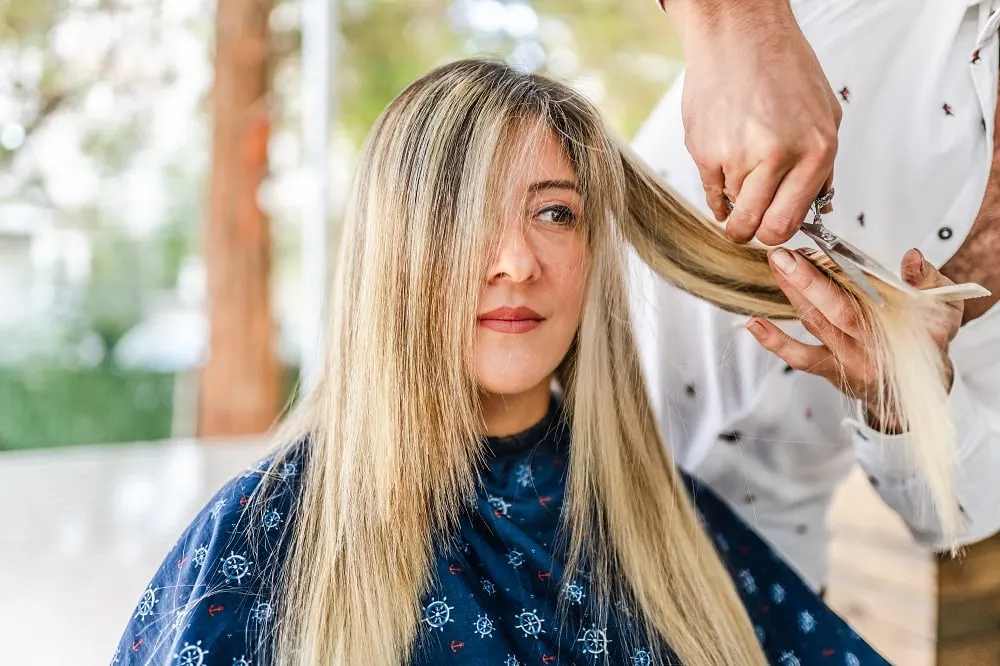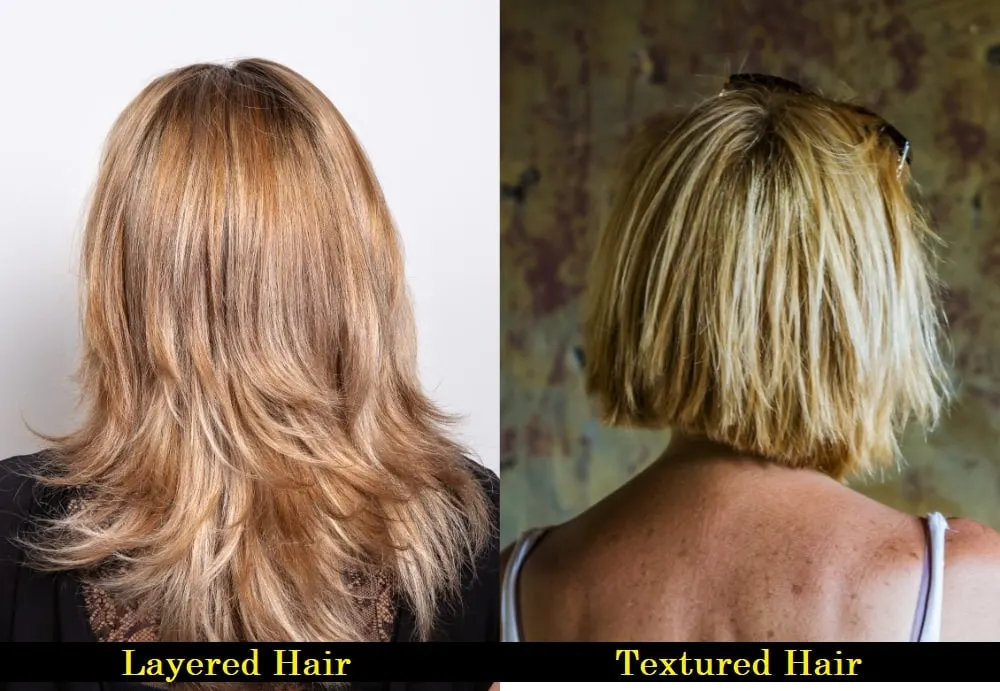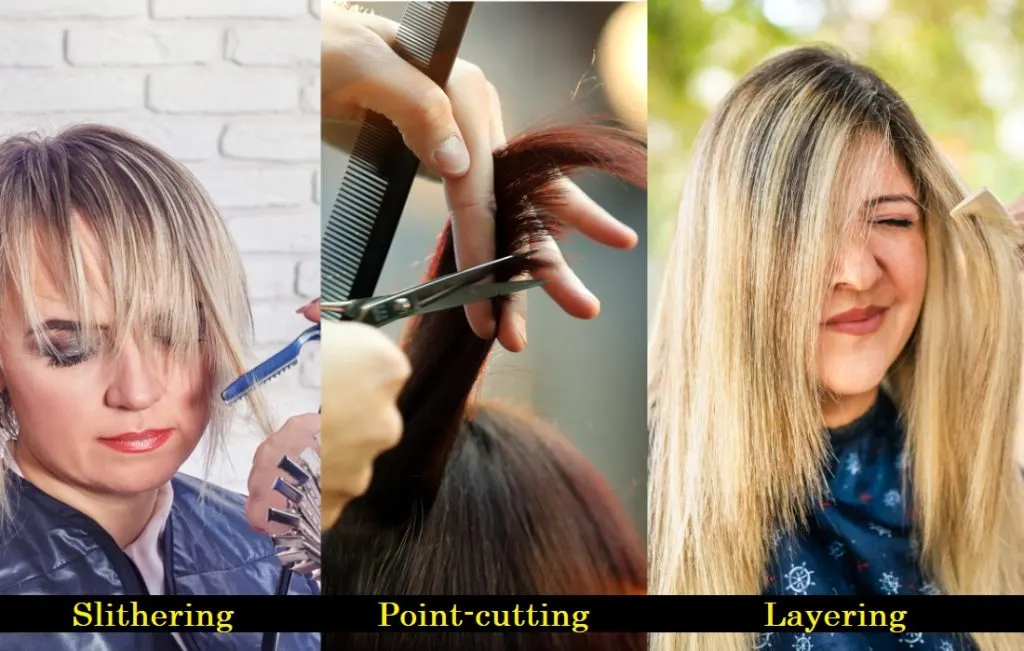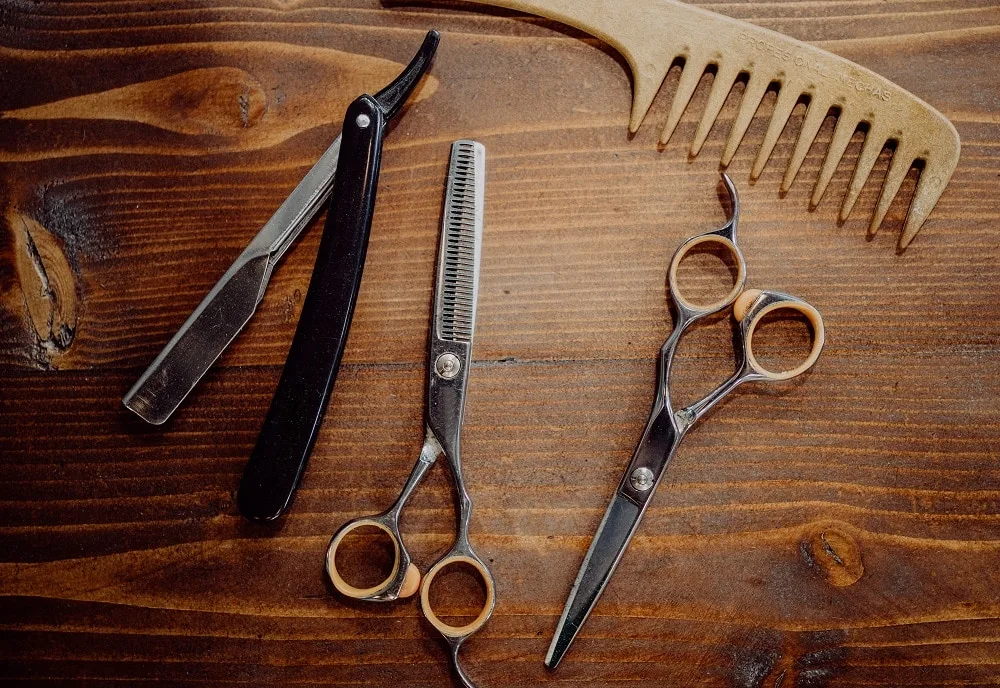Layering and texturizing are ways to add volume and movement to your hair. But they have key differences that you should consider when choosing between textured and layered hair.
While a lot goes into choosing a haircut, understanding what each is and how it looks on your hair can be important decision factors.
Layering is a hair styling technique where the ends of your hair fall at different lengths. Texturizing is a finishing hairstyling technique that adds body, volume, and interest to the hair. Let’s dive deep into the differences between textured hair and layered hair so that you can pick what’s better for you.
What Is Hair Texturizing?

Texturizing is a finishing hairstyling technique used to add body, volume, and interest to your hair by removing bulk from certain parts of the hair.
It is a great styling alternative for a low-maintenance, informal cut. You can use it to highlight certain facial features, including high cheekbones or your eyes. It also removes the bluntness of some haircuts by point-cutting or slithering into the hair edge to soften it.
Texturizing is also flexible, as you do not have to commit to a haircut to maintain your hair. You can experiment with texturizing using texturizing products such as sprays and pomades.
Texturizing may also mean using chemicals to alter natural hair’s wave pattern permanently. While it makes hair more manageable and less prone to frizz, it’s not the same as a textured haircut.
Pros of Texturizing Hair
- Texturizing adds an effortless look to your hair
- It adds body, bounce, and movement to hair
- Texturizing removes bulk from hair
- It’s a low-maintenance haircut
- You can test out texturizing with hairstyling products instead of cutting your hair
Cons of Texturizing Hair
- Over-texturizing can thin out your hair and damage it
- Frizzing from some texturizing techniques, especially on curly hair
What Is Hair Layering?

Layering is a hair styling technique where the ends of your hair fall at different lengths relative to each other, giving the impression of having different hair lengths.
With layering, your hairstylist cuts the lower levels of your hair longer than the top layers. Layered hairstyles will look different depending on the hair’s length, texture, and thickness.
Layering is a flattering hairstyle that looks good on every hair type and face shape. But before you get layers in your hair, you should determine your goals, including the type of layered haircut you want.
Here are some popular layered haircuts:
- The classic layered cut featuring long layers
- Long layers combined with a full fringe
- Subtle layering
- Face framing layers
- Layered bob
- Curtain bangs
- Short wispy layers
- Curly layers
Pros of Layering Hair
- Adds volume and movement to long hair
- Layered hair enhances facial features and can be used to hide facial flaws
- Layering makes hair more manageable by minimizing its bulk
- Allows for a style change without changing your hair length
- Layering adds interest and shape to your hair
Cons of Layering Hair
- It is a high-maintenance hairstyle
- You may have a choppy look if you want to grow out your layers
- You have more split ends all around your head
- Limited styling options, especially with medium to short hair
What Does Textured and Layered Hair Look Like?

Texturized hair maintains the same hair length but with a less bulky look than what you began with.
On the other hand, layered hair has distinct levels throughout its length. The distance between these levels varies, but they are more apparent regardless of the hair length and thickness.
Differences Between Textured Hair and Layered Hair
Understanding the difference between textured hair and layered hair is vital when visiting your hairstylist to help you choose between textured and layered hair.
Technique

Hair stylists achieve textured vs. layered hair using various techniques. With textured hair, the stylist achieves the desired look through point cutting, twist cutting, slithering, and smooth cutting.
Point cutting is the common yet subtle texturizing method that gives a more rounded than a blunt cut. This technique can also create a dramatic look by cutting the hair at an angle.
The second way a stylist can texturize your hair is through twist cutting. This technique involves twisting a small portion of hair tightly and then cutting. Twist cutting is a popular texturizing technique for bangs and inverted bobs.
Slithering is a more specialized texturizing technique. It’s great for those who want to thin and texturize thick hair.
The stylist starts at the roots close to your scalp and thins your hair towards the ends. They apply light pressure to the scissors to prevent cutting deeply into your hair.
Hair layering often involves cuts that define the length of various layers along the hair. The general layering technique begins with over-directing all your hair to the front in a ponytail, then cutting that layer to the desired size.
The second layer starts by sectioning the hair above the ears, over-directing it to the front, and cutting.
The final step involves cutting the face-framing pieces and bangs if desired. Layering may also involve point cutting and blending the layers for a finished look.
Cut Direction
Layering vs texturizing follows different cutting directions. In texturizing, the stylist cuts small chunks of hair along the hair shaft from the root or mid-length to the hair ends, depending on the technique used. Layering, in contrast, involves cutting off the length of your hair to create layers.
Maintenance
Maintenance is a significant factor when choosing between textured vs layered hair. Textured hair requires less maintenance compared to layered hair.
In addition to your regular hair care routine, layered hair requires regular salon visits to keep your layers defined.
Tools Used

In most cases, hairstylists use the same tools for layering and texturizing.
For hair texturizing, hairdressing scissors, texturizing shears, and razors are the commonly used tools.
Hair layering tools include hairdressing scissors, blending shears, combs and brushes, sectioning clips, and heat styling tools.
Hair Length and Type
Your hair type and length will determine the best choice between textured vs layered hair. Texturizing works well with almost any hair type but is not the best alternative for those with thin hair. Texturizing can also be used on short hair, especially if you want a uniform look lengthwise.
Layering, on the other hand, is best for thick hair. You can style long and short hair to achieve a classy, elegant, and bold look.
While we’ve highlighted the key differences between textured and layered hair, combining the two styles gives a textured, layered cut. These two hairstyling techniques will often be used together, especially when you go for a layered haircut.
Below is a textured hair vs layered hair comparison table summarizing the key differences.
| Textured Hair | Layered Hair |
| Texturizing works best for short hair. | Layering is popular for long hair. It’s also excellent for short layered styles such as pixie cuts and bobs. |
| Texturizing hair does not require styling to show. | Layered hair requires additional styling, such as curling, for the layers to show. |
| Texturizing does not create layers in the hair. | Layering produces a visual effect of the different heights within your hair. |
| Texturizing hair removes bulk from hair | Layering reduces hair length at different levels |
So, Textured Vs. Layered Hair – What Should You Pick?
Go for a textured haircut if you are looking for a wispy appearance to your haircut. Textured hair is also a great alternative if you want an informal look. Texturizing means you must sacrifice a significant length if you have very long hair.
Layered hair works well if you want a face-framing haircut, have curly hair, or want hair that gives you various styling options, especially if you have long hair.
Related Topics
